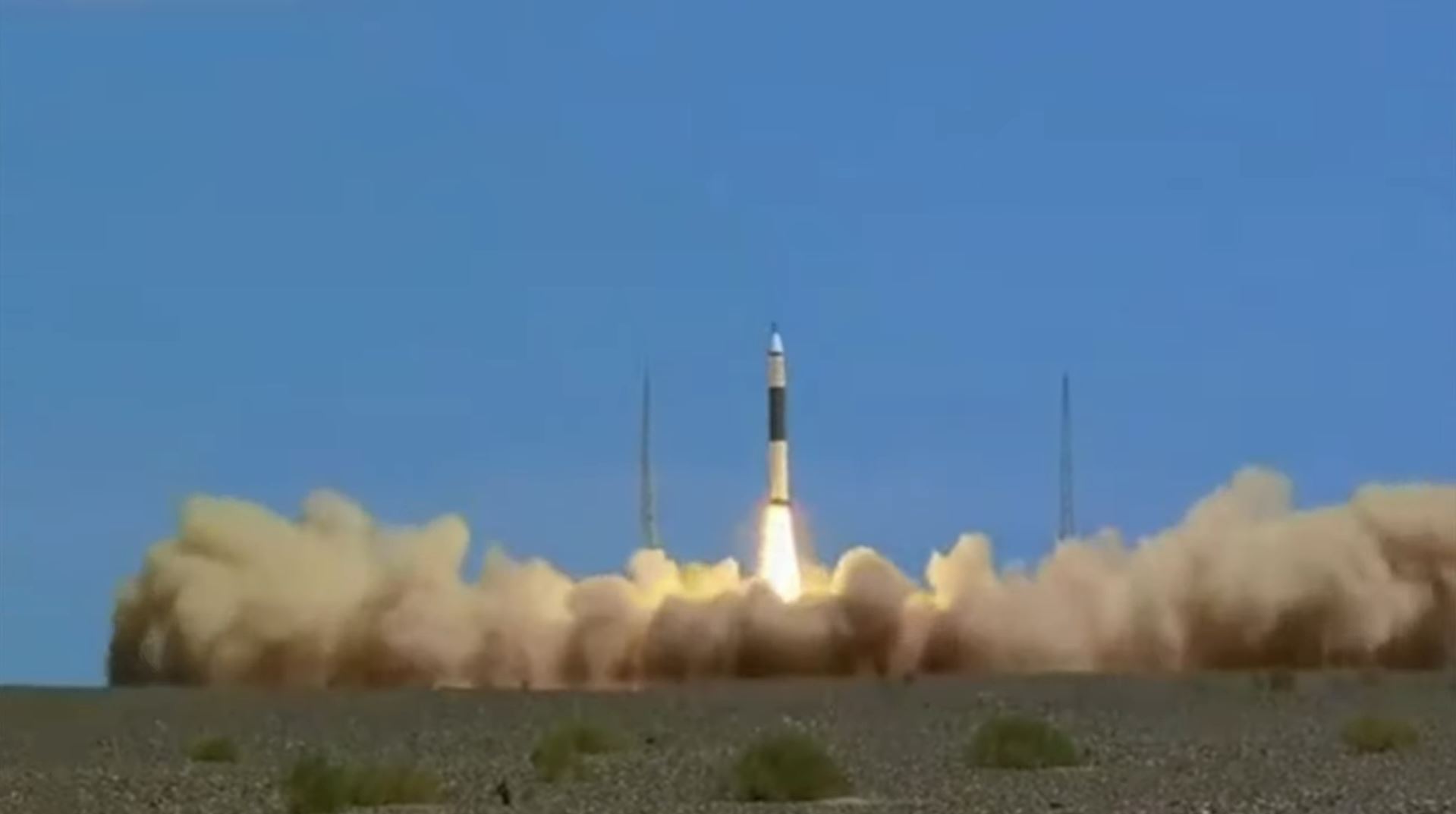HELSINKI — Launch of a new Chinese Kuaizhou-11 commercial solid rocket ended in failure Friday resulting in the loss of two satellites.
The Kuaizhou-11 lifted off at 12:17 a.m. Eastern from a transporter erector launcher at the Jiuquan Satellite Launch Center, northwest China.
Video footage of the launch taken from a delayed stream indicates the rocket performed well for at least one minute, with unofficial reports of first and second stage separation.
Terse reports from Chinese media state that the specific cause of the failure is ‘under further analysis and investigation’.
The first payload was a Jilin-1 video satellite developed by Changguang Satellite Co. Ltd., for Bilibili, a Chinese video sharing website. Changguang Satellite is a commercial offshoot of the state-owned Changchun Institute of Optics, Fine Mechanics and Physics under the Chinese Academy of Sciences.
The second satellite was reported to be CentiSpace-1-S2 (Weili-1-02). The previous satellite in the series was for low-Earth orbit navigation enhancement, developed for Beijing Future Navigation Technology Co., Ltd.
The debut of the Kuaizhou-11 was initially projected for 2018. Footage published by CCTV in 2019 suggested an explosive failure during first stage engine testing.
The mission was China’s 19th launch of 2020, following the successful launch of the APSTAR-6D communications satellite to geosynchronous transfer orbit Thursday.
China has suffered three failures this year. These were the debut launch of the Long March 7A in March, a new launcher which may replace the aging, hypergolic Long March 3B. The latter launcher failed in April resulting in the loss of the Indonesian Palapa-N1 communications satellite.
Kuaizhou-11 and commercial launchers
The Kuaizhou-11 is a larger version of the Kuaizhou-1A solid rocket, operated by Expace, a commercial spin-off from the China Aerospace Science and Industry Corp., a state-owned missile maker. The rocket has a diameter of 2.2 meters, a mass at liftoff of 78 tons. It is capable of delivering 1,000 kilograms to a 700-kilometer Sun-synchronous orbit.
Leena Pivovarova, an analyst at consulting firm Northern Sky Research, told SpaceNews that the “KZ-11 coming online is an addition to China’s launch sector development of competitive domestic launch capabilities and service offerings to its burgeoning “commercial” space industry”.
“China’s launch sector is following a larger worldwide trend of increasing responsiveness and flexibility in launch activities, increasing its already aggressive launch cadence, to developing mobile launch operations and sea launch capabilities”, Pivovarova says.
“Cutting down traditional launch operations and gaining rapid response (or readiness) capabilities can have many advantages to both commercial and government customers.
Pivovarova says competition to provide low-cost launch solutions is heating up between commercial launch firms in China, including Expace, iSpace, OneSpace, Landspace, and others.
“KZ-11 is the second rocket on Expace’s development roadmap, which includes gradual development of larger rockets within the same rocket family. All of this signals an expansion of the commercial footprint within China’s space industry, which had been exclusively dominated by [the] government in prior decades.
Expace is also developing four-meter-diameter Kuaizhou-21 and -31 solid rockets designed to carry up to 20,000 and 70,000 kilograms to LEO respectively. Debut launches are projected for the middle of the 2020s and after.
The Chinese government opened portions of the space sector to private capital in 2014. A national strategy of military-civilian fusion has facilitated technology transfer in order to foster innovation, lower costs and create new supply chains, to benefit both civilian and military capacities.
Beijing-based iSpace became the first such firm to launch a satellite into orbit in July 2019 following failures by two other companies. Galactic Energy is currently expected to launch its first Ceres-1 solid launcher in August or September.
Landspace and iSpace are aiming for inaugural launches of new, larger liquid methane-liquid oxygen launch vehicles in 2021.
